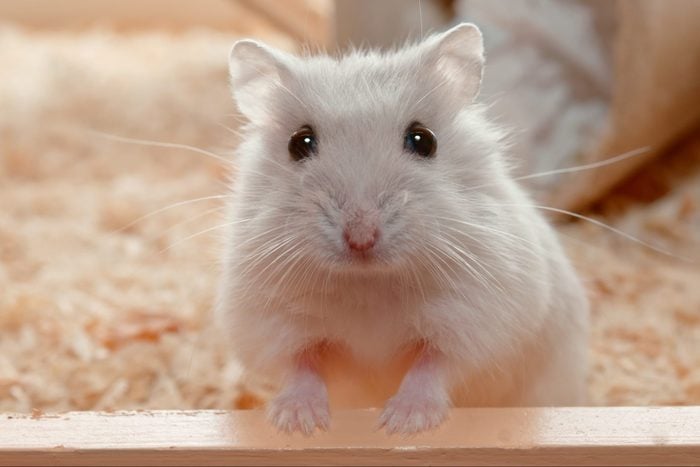
Low-maintenance pets worthy of love
Let’s get one thing straight: Technically speaking, low-maintenance pets don’t exist. “I prefer ‘lower’ versus ‘low-maintenance’ because assuming responsibility for any living animal’s well-being is a very big commitment,” says veterinarian Dana Varble, DVM, chief veterinary officer with North American Veterinary Community. Almost any animal, including apartment dogs, fluffy cats, cute ferrets, colorful lizards, and even low-maintenance dogs, can develop health problems, especially if they are not looked after properly. And that will naturally make care more involved (and more expensive).
Every type of animal should get a yearly checkup at the vet, and these days there is health care for just about every pet. “There are board-certified aquatic veterinarians that will gladly perform surgery on your goldfish, and I have seen hamsters that have gone for CT scans,” says veterinarian Matthew McCarthy, DVM, founder of Juniper Valley Animal Hospital in Middle Village, New York. “So it’s worth noting that everything is a low-maintenance pet until it’s not.”
With that in mind, animal experts suggested these low-maintenance pets. None require the sort of grooming and hair care you’d provide a puppy. Many don’t require daily, hands-on care. And most have habitats and feeding needs that are easy to manage.
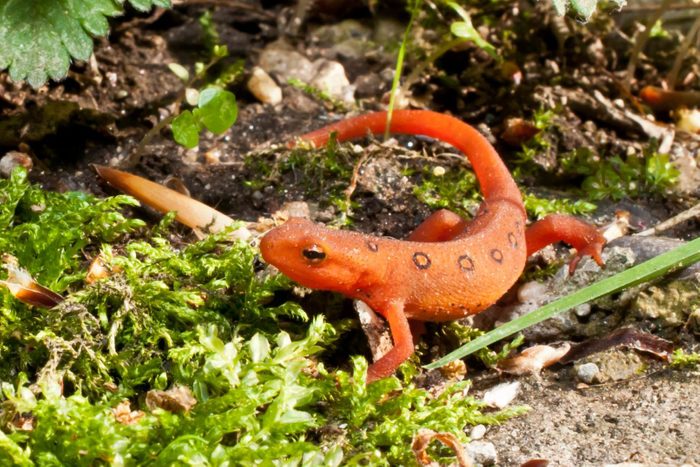
Eastern newt
Talk about certified kid-friendly: Dr. McCarthy had these little guys when he was a kid and recommends them for prospective pet owners who don’t have a ton of time to dedicate to critter care. These low-maintenance pets are just five inches long and can live 10 to 15 years. “They can be kept in a small aquarium and typically don’t need a heated tank as long as your home is at a comfortable temperature,” he says. If your house is on the cooler side or you just want to create a newt paradise, a 10-gallon tank with heat and light will do the trick.
Newts will eat various live food, like earthworms, or a commercial amphibian diet. Their slimy skin acts as a barrier against bacteria, so they’re more of a look-don’t-touch kind of pet. And here’s something your pet store might not tell you: According to Dr. McCarthy, it’s best to get an Eastern newt because many western newts secrete a potent neurotoxin you don’t want to mess with.
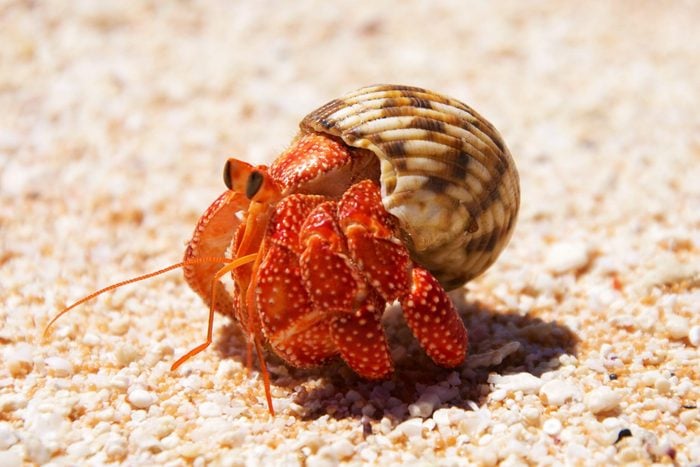
Hermit crab
You might be tempted to scoop up one of these adorable low-maintenance pets when you’re at the beach, but don’t. Marine crabs are illegal pets and should stay at the beach. But land hermit crabs are available from pet stores. You’ll need to buy a hermit crab tank, plus an under-tank heat pad and a large water dish to maintain a warm and humid environment. From there, the animals are easy and inexpensive to care for. Hermit crabs are quite social and tend to be more active in groups—and at night. “Since caring for a few hermit crabs really isn’t any more difficult than caring for one, having multiple crabs is recommended,” says Dr. McCarthy. With proper care, these tiny party animals can live from five to 15 years.
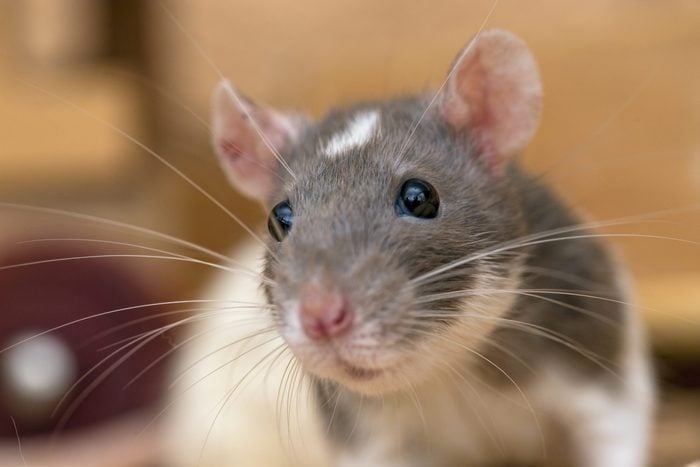
Norway rat
Yes, this rodent is the same species that roams city streets, rummaging through garbage and generally being a menace. But surprisingly, they make good low-maintenance pets. (You know, if the idea of a rat doesn’t completely freak you out.) Just keep this one warning in mind: Never rescue one from the streets because it can carry and spread a disease called leptospirosis, which is dangerous to humans and pets. Instead, seek out a pet rat breeder.
“They make great pets and will chill out with you on your lap while you read, watch television, or work on the computer,” says Dr. McCarthy. The more time you spend with them, the sweeter and more friendly they get. They’re a good option for people who are allergic to dogs and cats. He advises getting two, as they are happier living with a roomie—no coed accommodations unless you want to get into the breeding business. You won’t spend a lot of time cleaning up after them. Norway rats are fastidious, like cats. As far as living arrangements go, a roomy wire cage with a hiding box, an exercise wheel, and food keep these fun rats happy.
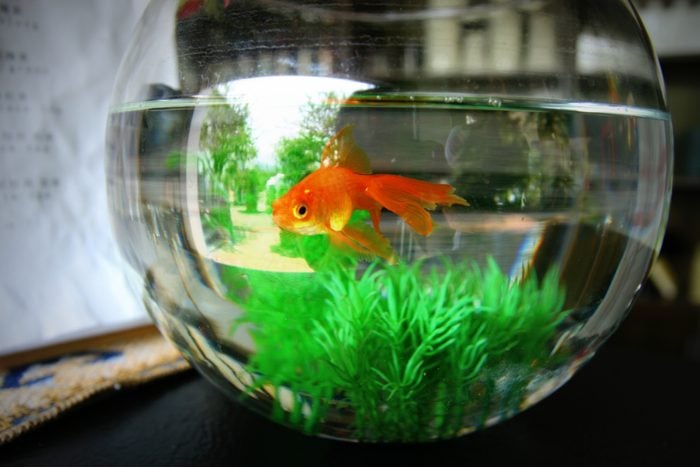
Goldfish
Among low-maintenance pets, the humble goldfish might just be one of the easiest and cheapest to care for. In return, it provides a valuable dividend for your health. Numerous studies reveal that watching fish is associated with lower blood pressure. Plus, fish are easy to talk to and won’t heckle you when you share these gill-splitting fish puns with them. Goldfish thrive with a tank mate, so consider getting a couple. “They are more tolerant of fluctuations in water quality and temperature than many other fish,” says Dr. Varble.
That said, they do produce a lot of waste, so if you want to save yourself the chore of changing the water every few days, splurge on a filtered tank with plants for them to hide behind and aquarium gravel. Dr. Varble says that you’ll have plenty of opportunities to redecorate their tank—goldfish are hardy and can live for 10 to 30 years.
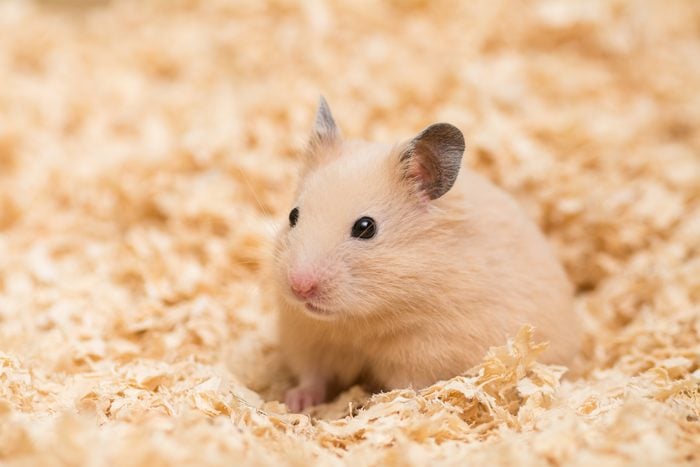
Syrian hamster
If you’re not a morning person, the cute Syrian hamster could be the perfect pocket pet for you. They are nocturnal and live their best life at night. “Syrian hamsters are generally low-maintenance pets, quiet, tame enough to hold—although a gentle touch is needed—and fun to watch, especially on their exercise wheel,” says Dr. McCarthy. As one of the most docile hamster breeds, they enjoy being handled, but it’s essential to handle them daily so they get accustomed to your touch. Their cage isn’t too hard to keep clean because they do their business in one corner. Provide a wheel for exercise and a toy tunnel, but not another hamster. Some pet combinations can never live together, and this is one of them. “These hamsters are one of the most solitary animals in the wild, making them quite territorial, and as such should always be housed alone. If not, you will truly understand the term cage match,” says Dr. McCarthy.
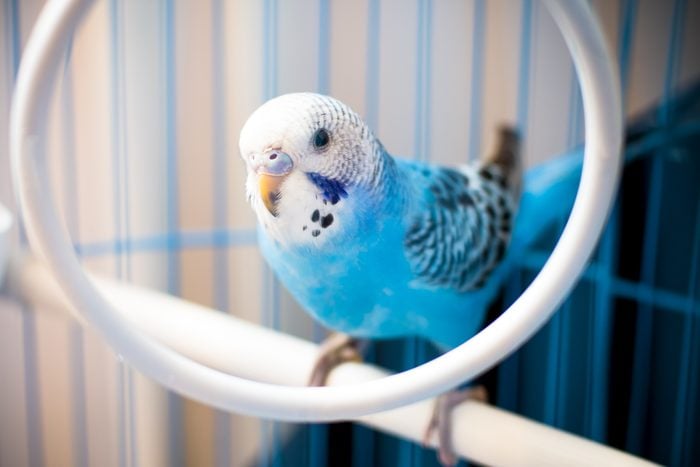
Budgerigar
Looking for someone to shoot the breeze with? A budgerigar, also known as budgie, is the chatty feathery friend you’ve been waiting for. “They are highly social birds and love to interact with people, birds, and even other animals. They frequently learn behaviors and mimic voices and tones,” says Dr. McCarthy. A pet secret you might not know: Though they mimic more than converse, they can be trained to respond to cues and verbal commands. “Budgies are the most popular of the 115 species of small parrots known as parakeets, likely due to their lower purchase price and minimal maintenance,” says Dr. McCarthy. A roomy cage with food, water, a perch, and a few noisy toys with reflective surfaces ensure budgies keep singing your praises.
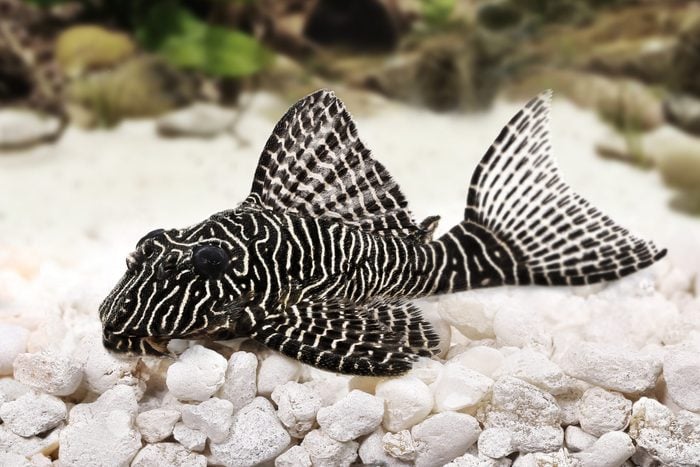
Plecostomus
The height of low maintenance is a pet that cleans up after itself. That’s why pet owners love the plecostomus, a fish that’ll help you clean its tank. Also known as algae eaters, suckerfish, and pleco, these hardy fish can live up to 15 years. “They are actually a group of catfish species and can tolerate a wide variety of water temperatures and conditions in a tank, and come in a variety of colors and sizes,” says Dr. Varble. Their mission is to scour the bottom of the tank and rid it of algae. They do a bang-up job, but you’re not totally off the hook; you’ll need to clean the tank regularly. If you’re looking for a tank mate for your goldfish, the pleco makes for a clean and peaceful roomie, especially if you go for the smaller Bristlenose pleco, which grows to three to five inches. Plecos love algae, and sinking algae wafers ensure they have ample food in the tank.
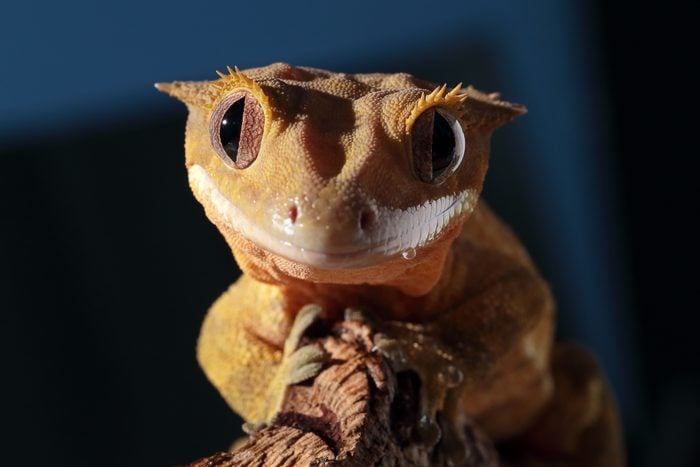
Crested gecko
Crested geckos are one of the animals that came back from the brink of extinction, and they adapted to captivity so well that they’re now the easiest reptiles to own, Dr. Varble says. That’s because, unlike other reptiles, these low-maintenance pets don’t need supplemental UV light. “The tank setup is relatively simple, and geckos can be completely maintained on a widely available nutritious powdered food, although they also like feeder insects as treats,” says Dr. Varble. These little cuties with a perpetual smile tolerate being handled and are recognized as non-biters. They come in a wide variety of brilliant colors and patterns and can change their colors to camouflage themselves, just as lizards do under certain conditions.
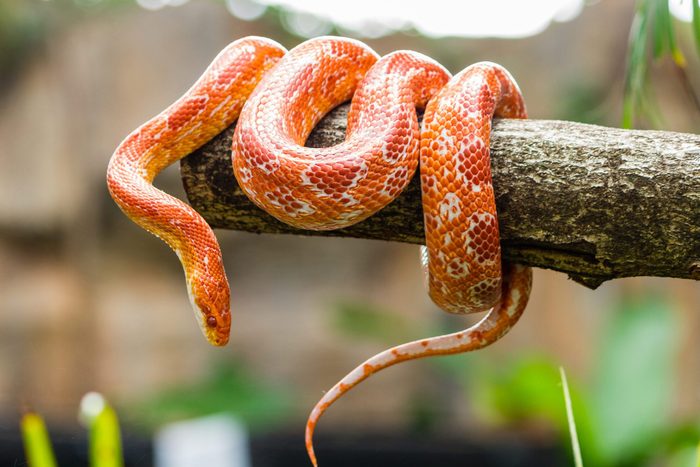
Corn snake
“Before you say no to the idea of a snake as a pet, consider this about the small and easy-to-handle corn snake: They can live into their 20s and are great companions to those who have busy jobs, long shifts, or travel frequently,” says Dr. Varble. Granted, most people want to know how to keep snakes out of their homes, not invite one in to live, but the corn snake is one of the most common snakes kept as pets. They have a docile nature, are reluctant to bite, and have brightly colored skin, so even if you’re not keen on picking them up, you can appreciate their beauty. As low-maintenance pets go, it doesn’t get much easier. “A simple 20- to 40-gallon tank set up with heat, UV, and daylights on a timer can be easily maintained for these colorful and easygoing snakes,” says Dr. Varble. They eat thawed frozen food once a week; adults are sometimes fed once every other week.
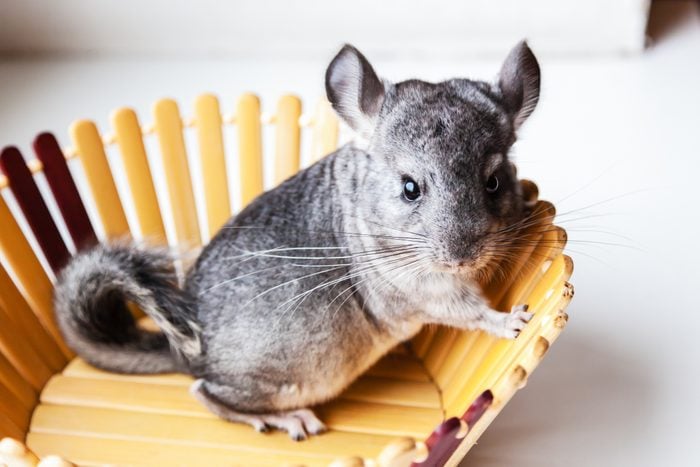
Chinchilla
Chinchillas have soft, thick, luxurious fur that would be perfect for snuggling against your cheek, but they’re not into being that tight with humans. They prefer to be on the move, exploring their surroundings. That’s not to say they have a hands-off policy, but to win one over, it takes patience and gentle and consistent handling, Dudder says. Still, your chinchilla might not stay in the palm of your hand for too long, preferring to climb you like a human mountain instead. Most of that climbing will be at night, as they are nocturnal.
As far as chinchilla digs go, they’re pretty basic. “They require a nesting box for comfort and to make them feel secure and a dust bath several times a week to remove dirt and oil from their fur,” says Dudder. Your little guy will bathe itself in chinchilla dust. Once it’s done, you’ll need to remove the bath, so it doesn’t get used as a bathroom. These cute critters crave time out of their cage in a designated small, safe area, so that’s something to consider.
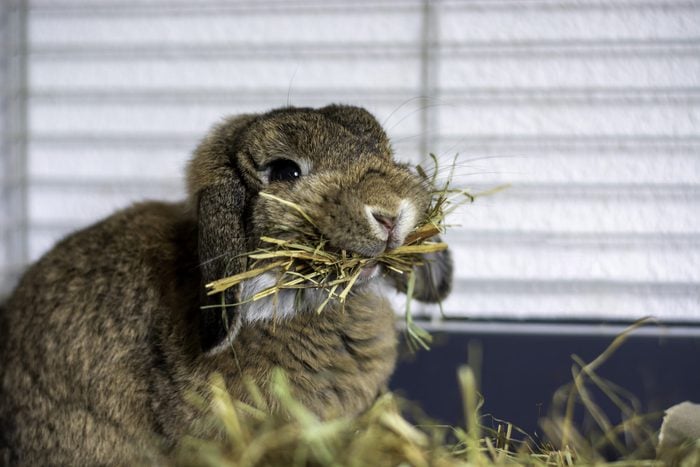
Holland Lop
Maybe you’ve already been looking at cute bunny pictures but can’t decide which breed is right for you. It’s not an easy decision because rabbits are so fluffy and cute. Though many rabbits make great pets, Dudder says Holland Lops are known as one of the more friendly breeds. Still, it’s important to know that rabbits are considered prey in the animal world and aren’t naturally fond of being “captured”—as in picked up and held. But with a deliberate and gentle approach, it’s entirely possible to have a snuggle bunny in your arms in due time.
“They need more space than other low-maintenance pets and should be allowed to stretch and exercise under direct supervision,” says Dudder. Bunny bonus: They can be litter box trained, making cage-cleaning a little easier. Rabbits eat a commercial diet of fresh fruits and vegetables, plus hay. Like other small animals, these bunnies need to see a veterinarian for a yearly checkup. “Tooth overgrowth is common in rabbits and can lead to serious medical issues if not tended to,” Dudder says.
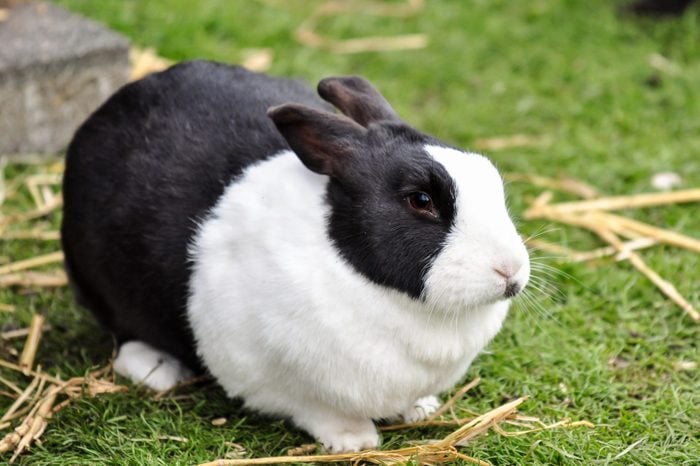
Dutch rabbit
Here’s another cute bunny option for you. The Dutch rabbit also has a sweet temperament but dons a highly recognizable white saddle on the back with a white blaze on the nose and collar. The other dominant colors could be black, blue, chocolate, gray, steel, or tortoise. Dudder loves them as a low-maintenance pet choice because they are playful and affectionate. But as with other rabbits, you have to earn their trust first and allow them to interact with you on their terms.
Since rabbits thrive in groups, you can pair two rabbits of different breeds together as long as they are neutered. They’ll enjoy each other’s company but also delight in interacting with their human by playing games, having their fur stroked, or just hanging out. Dutch rabbits, like all rabbits, need a habitat with space to roam and play. Depending on your house, that could be an extra-large cage, exercise pen, or a rabbit-proofed room with plenty of hay to chew. If you venture outside their habitat, consider a harness and leash—incidentally, a fantastic pet gift for the bunny mom in your life—that’ll make sure your new pet doesn’t get lost.
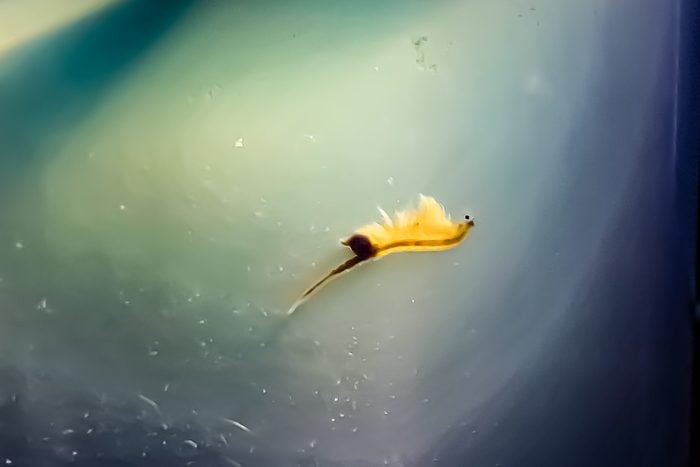
Sea monkeys
If you’re of a certain age, you might recall the colorful sea monkey ads on the back of comic books. If you ordered some, you found out a couple of weeks later that they didn’t look anything like the creatures depicted in the ad. That’s because sea monkeys are actually brine shrimp, not exotic sea animals. Still, it was cool that tiny creatures emerged after adding water. And proof that childhood hasn’t changed much, “they’re definitely a low-price-point starter pet and very retro,” says Dr. McCarthy. There’s not much that goes into their care. The original Sea Monkey kit comes with everything to get started, except a fishbowl. In a few weeks, they’ll grow to about an inch long. “Basically, you can set it up and forget as they just need to be fed once a week,” he says. “And if it’s not going well, they can become a nice food source for your betta fish or newt.”
Sources:
- Dana Varble, DVM, chief veterinary officer with North American Veterinary Community
- Matthew McCarthy, DVM, founder of Juniper Valley Animal Hospital in Middle Village, New York
- Kim Dudder, regional technician director at VCA Animal Hospitals
- PLOS One: “The effects of interacting with fish in aquariums on human health and well-being: A systematic review”
